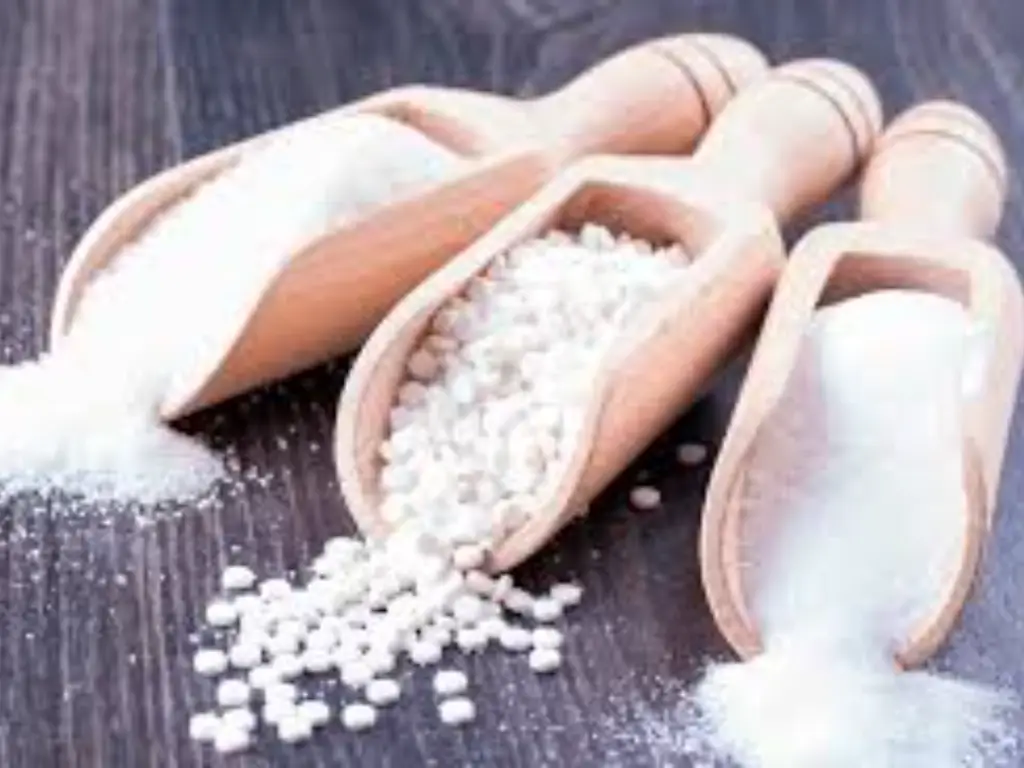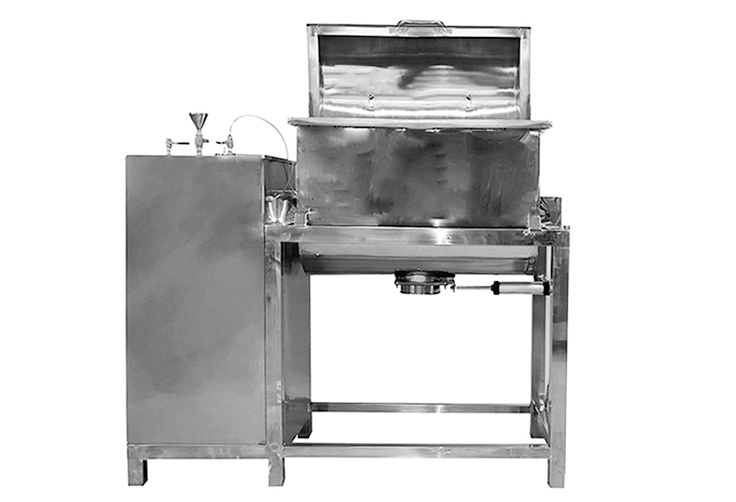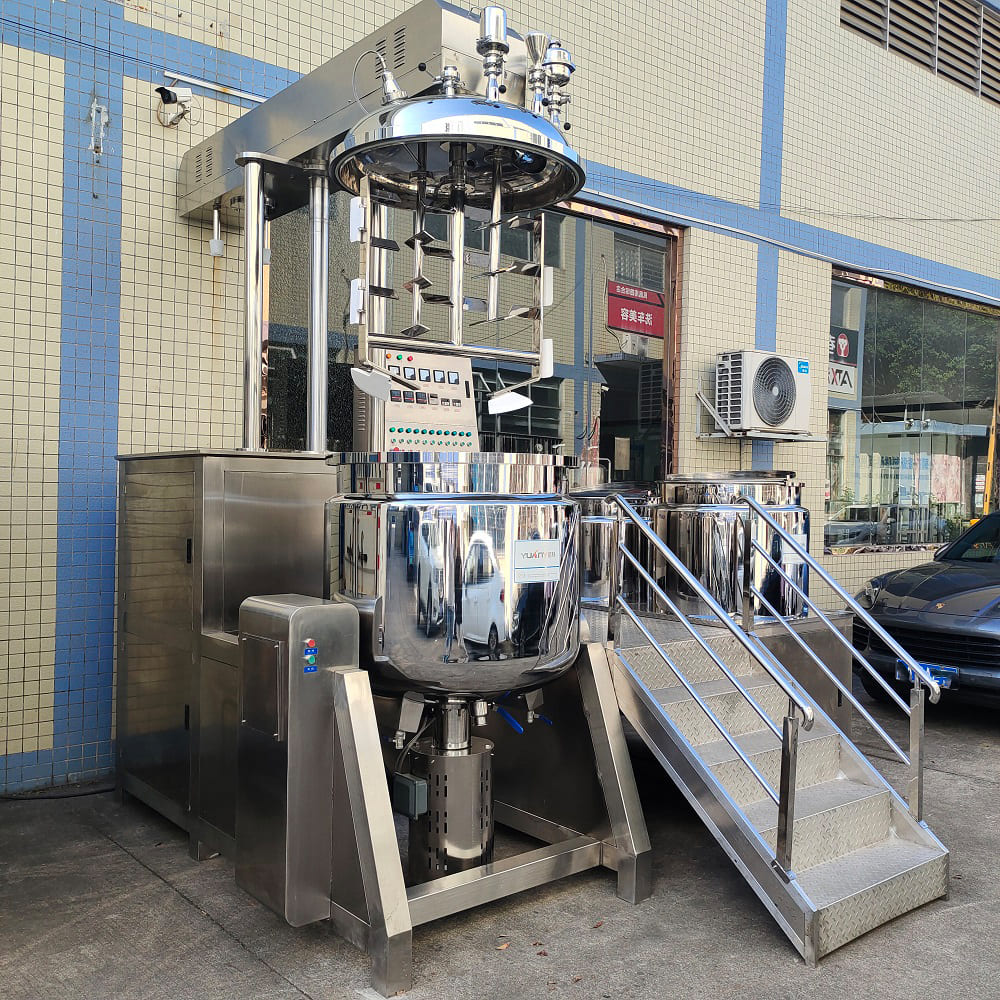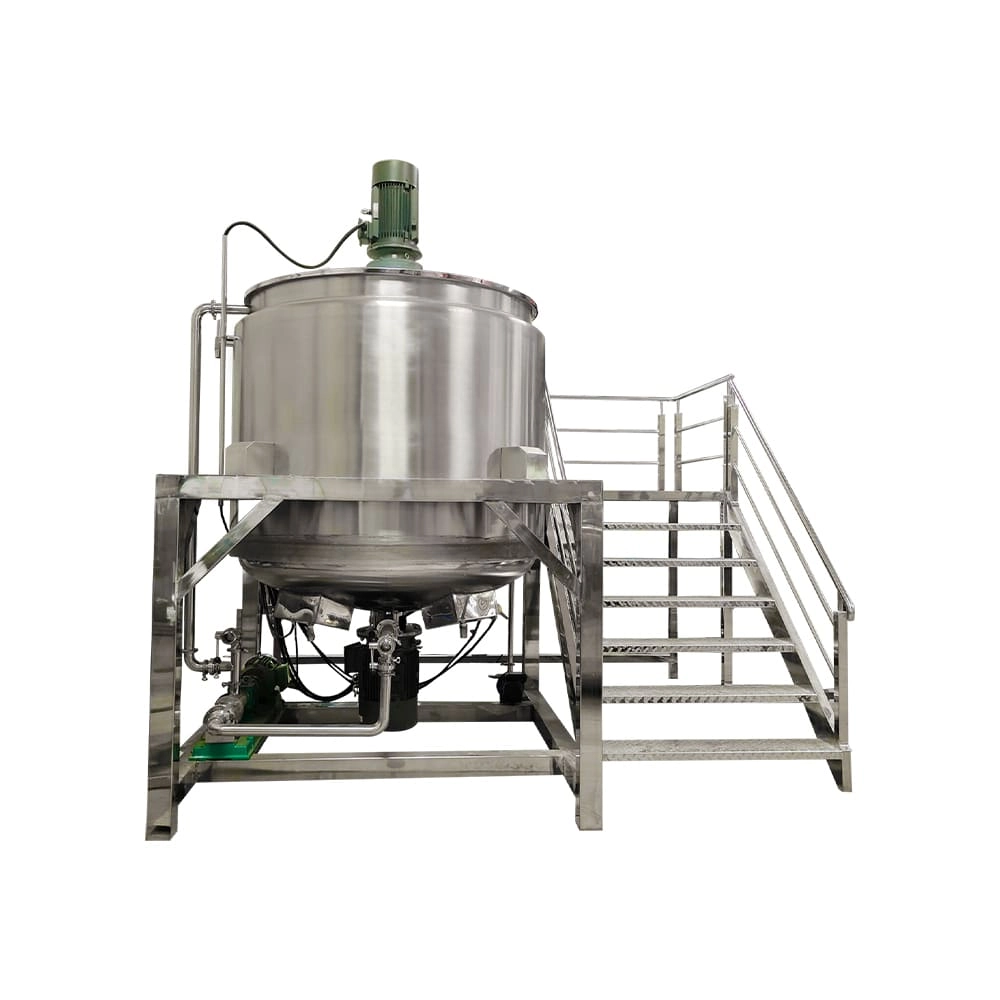How Artificial Sweeteners Are Made: Inside the Manufacturing Process & Key Equipment
YUANYANG explains how artificial sweeteners are made, detailing manufacturing steps and essential equipment such as the ribbon mixer, homogenizer mixer, and vacuum emulsifying mixer. Learn process flow, quality controls, and equipment selection for production.
- What Are Artificial Sweeteners Made Of?
- Common Ingredients Found in Artificial Sweeteners
- How Artificial Sweeteners Are Manufactured
- Chemical Synthesis of Sweeteners
- Extraction and Refinement
- Fermentation
- Enzymatic Conversion
- Why Industrial Mixers Are Essential in Artificial Sweetener Manufacturing
- Ribbon Mixer
- Homogenizer Mixer
- Vacuum Emulsifying Mixer
- How Artificial Sweeteners Affect Metabolism and Health
- The Place of Artificial Sweeteners in Everyday Diets
- Latest Advancements and Innovations in Artificial Sweeteners
- FAQs
- How are artificial sweeteners metabolized in our body?
- Which Ingredients Are Used to Produce Erythritol-Based Artificial Sweeteners?
- Do Man-Made Artificial Sweeteners Replicate the Characteristics of Sugar?
- What Is the Production Process for Artificial Sugar Meant for Daily Use?
- Can Artificial Sweeteners Contribute to Weight Gain?
- What chemical processes are used to make artificial sweeteners?
- Conclusion
What Are Artificial Sweeteners Made Of?
Artificial sweeteners, which seem to be the miracles of the modern world, begin with simple components. These components are transformed into compounds that resemble the sweetness of sugar but do not have the caloric effect.
One of the most common is the artificial sweeteners that are produced using erythritol, a natural sugar alcohol that is present in fruits but is manufactured in the industries using fermentation.

Common Ingredients Found in Artificial Sweeteners
|
Artificial Sweetener |
Key Ingredients |
Description |
|
Aspartame |
Aspartic acid, Phenylalanine |
A mixture of two amino acids, which forms a sweetener that is approximately 200 times sweeter than sugar. |
|
Sucralose |
Sucrose, Chlorine |
Altered sugar molecule, in which some of the hydroxyl groups are substituted with chlorine atoms, making it sweeter. |
|
Saccharin |
Toluene derivatives |
Made from toluene, making a substance 300-500 times sweeter than sugar. |
|
Steviol Glycosides (Stevia) |
Stevia plant leaves |
Leaves of the stevia plant, which are extracted to give a natural, zero-calorie sweetness. |
|
Erythritol |
Glucose (from starch) |
A fermented sugar alcohol made out of starch glucose. |
|
Acesulfame Potassium (Ace-K) |
Acetoacetic acid, Potassium |
Mixes acetoacetic acid with potassium to make a sweetener approximately 200 times sweeter than sugar. |
|
Neotame |
Aspartic acid, Phenylalanine, 3,3-dimethylbutyraldehyde |
Like aspartame, but much sweeter and structurally different, because 3,3-dimethylbutyraldehyde is added. |
|
Xylitol |
Xylose (from wood or corn cobs) |
A xylose-based sugar alcohol, occurring in a variety of fruits and vegetables or obtained as a byproduct of wood or corn cobs. |
How Artificial Sweeteners Are Manufactured
Complex chemistry and engineering is the process that takes simple ingredients to sweeteners that adorn our tables. Artificial sweeteners are mostly products of chemical synthesis.
An example is that one of the most popular artificial sweeteners is produced by the combination of two amino acids, aspartic acid and phenylalanine.
Chemical Synthesis of Sweeteners
This process is a controlled reaction that combines these molecules and produces a compound about 200 times sweeter than sugar.
Extraction and Refinement
Others, such as steviol glycosides, which are extracted out of the stevia plant, need an extraction process. In this case, the sweet compounds are removed from the plant leaves and then purified to obtain the sweet components.
Fermentation
The production of erythritol is carried out by fermentation. In this case, corn or wheat starch glucose is fermented with yeasts or fungi to produce erythritol but does not lose its natural sweetness.
Enzymatic Conversion
This is applicable in sweeteners such as sucralose, where particular enzymes are utilized to substitute certain hydroxyl groups in the sugar molecule with atoms of chlorine, increasing the sweetness level.
Why Industrial Mixers Are Essential in Artificial Sweetener Manufacturing
YUANYANG is an innovative producer of artificial sweeteners in the delicate field of artificial sweetener production, and it uses industrial mixers. They are not mere tools to them but are used in improving the efficiency and quality. YUANYANG uses various types of industrial mixers, each of which is carefully selected according to its special purpose, which is the result of many years of experience and knowledge of the manufacturing process transmitted across continents.
Ribbon Mixer
In the case of dry-phase mixing of powdered sweeteners (erythritol, xylitol, bulk premixes), a ribbon mixer/powder mixer offers rapid, axial-and-radial circulation and gentle bulk flow that contributes to uniform composition without over-breakage.

Homogenizer Mixer
Where you require quick de-agglomeration, powder dissolving into a liquid carrier, or stable liquid emulsions (e.g., syrup bases, liquid sweetener dispersions), YUANYANG Homogenizer Mixers (both lab and inline) provide the rotor-stator shear to reduce mixing time and create fine, repeatable dispersions.

Vacuum Emulsifying Mixer
In liquid or semi-liquid products where bubbles or oxidation cannot be tolerated (clear syrups, flavor-sweetener blends), the Vacuum Emulsifying Mixer would be the best choice—the vacuum process eliminates bubbles and can assist in stabilizing the final texture and shelf life.
All these mixers have a particular role in the manufacturing process that helps to make the process efficient, consistent, and of high quality.

How Artificial Sweeteners Affect Metabolism and Health
Knowing how these sweeteners work in our body is very important. One of the most popular questions is whether artificial sweeteners cause you to be fat. Research indicates that they do not directly lead to weight gain, but their effects on appetite and taste preferences should be taken into account in a healthy diet.
The Place of Artificial Sweeteners in Everyday Diets
Artificial sweeteners are everywhere, in diet sodas, sugar-free desserts, and so on. How artificial sugar is made to be consumed on a daily basis makes sure that these products are sweet without the calories; hence, they are used in diets that manage weight.
Latest Advancements and Innovations in Artificial Sweeteners
The industry of artificial sweeteners is constantly changing, and new discoveries are made. Innovations in Sweetener Technology: Artificial Sweeteners Made by Man emphasizes the latest advances, including the development of more natural-tasting and stable sweeteners to be used in a wide variety of applications.
FAQs
How are artificial sweeteners metabolized in our body?
Artificial sweeteners such as aspartame and sucralose are broken down differently than regular sugar. Though they do not cause a lot of weight gain, their effect on appetite and taste preference is considerable. For example, aspartame is broken down into its original amino acids, and sucralose, very poorly soluble in fat, does not accumulate in fat tissues and goes through the body mainly unchanged.
Which Ingredients Are Used to Produce Erythritol-Based Artificial Sweeteners?
A common artificially sweetened food is erythritol, which is predominantly produced by the use of starch-derived glucose. This glucose is fermented with yeasts or fungi to produce erythritol but without losing its natural sweetness.
Do Man-Made Artificial Sweeteners Replicate the Characteristics of Sugar?
Yes, most of the artificial sweeteners are artificially produced to resemble sugar. An example is sucralose, which is an artificial sweetener that is derived by altering sucrose, and three hydroxyl groups are substituted with chlorine to increase sweetness.
What Is the Production Process for Artificial Sugar Meant for Daily Use?
Synthetic sweeteners such as aspartame and sucralose are synthesized chemically and converted into enzymes. Aspartame is synthesized by the combination of aspartic acid and phenylalanine, and sucralose is the result of the enzymatic exchange of certain hydroxyl groups in sucrose with chlorine atoms.
Can Artificial Sweeteners Contribute to Weight Gain?
Studies show that artificial sweeteners do not always cause weight gain. Nonetheless, one should pay attention to their effects on appetite and taste preferences. The key is moderate consumption because excessive consumption may even result in more craving of sweet foods.
What chemical processes are used to make artificial sweeteners?
Artificial sweeteners are made through a number of chemical processes. They are chemical synthesis (such as with aspartame) and enzymatic conversion (such as with sucralose). Also, sweeteners such as erythritol are produced through fermentation.
Conclusion
Artificial sweeteners are not only substitutes for sugar but also points of intersection of chemistry, health, and cooking. Their complex manufacturing procedures mean that we will be able to have sweetness and not sacrifice health objectives.

Why Your RO Systems Make Noise: Causes & Fixes

What Is an Emulsion Mixer? Industrial Guide 2026

2026 Homogenizer Selection & Maintenance: 7 Key FAQs

The Ultimate Guide to Liquid Mixing Tank 2026

Guide to Emulsifier Machine in 2026
Industries
What after-sales support services are available?
We offer 7×24-hour online support, regular maintenance, and rapid spare parts supply to ensure the equipment functions smoothly.
Automatic Servo Motor Capping Machine
What’s power supply for this automatic four wheels capping machine?
The power supply is single phase 220v 50hz/60hz.
Sealed Storage Tank
Can you add a card slot to put the name card of each kind of products.
Yes, there is indeed a card slot for the standard storage tanks.
Automatic Piston Filling Machine
Can the filling machine be connected with other machines, such as capping machine, bottle sorting machine?
Yes, this pneumatic filling machine is one of the complete filling line machines, user can tell the conveyor height of his current machine, we shall customize accordingly. If client buy a complete line from us, we will make every machine in a line or according to space.
Vacuum Emulsifier
What capacity do you provide for vacuum emulsifying mixer machine?
We can supply from 50 Liters to 5000 Liters for mixing tanks,but we recommend maximum 1000L for vacuum emulsifier homogenizer,whose the package sizes is just ok for regular 40” HQ container.
Leave a message
Have any questions or concerns about our products? Please leave us a message here, and our team will get back to you promptly.






 Scan QR Code
Scan QR Code
Facebook
YouTube
LinkedIn
Whatsapp: +8613434139712
Guangzhou Yuanyang Machinery